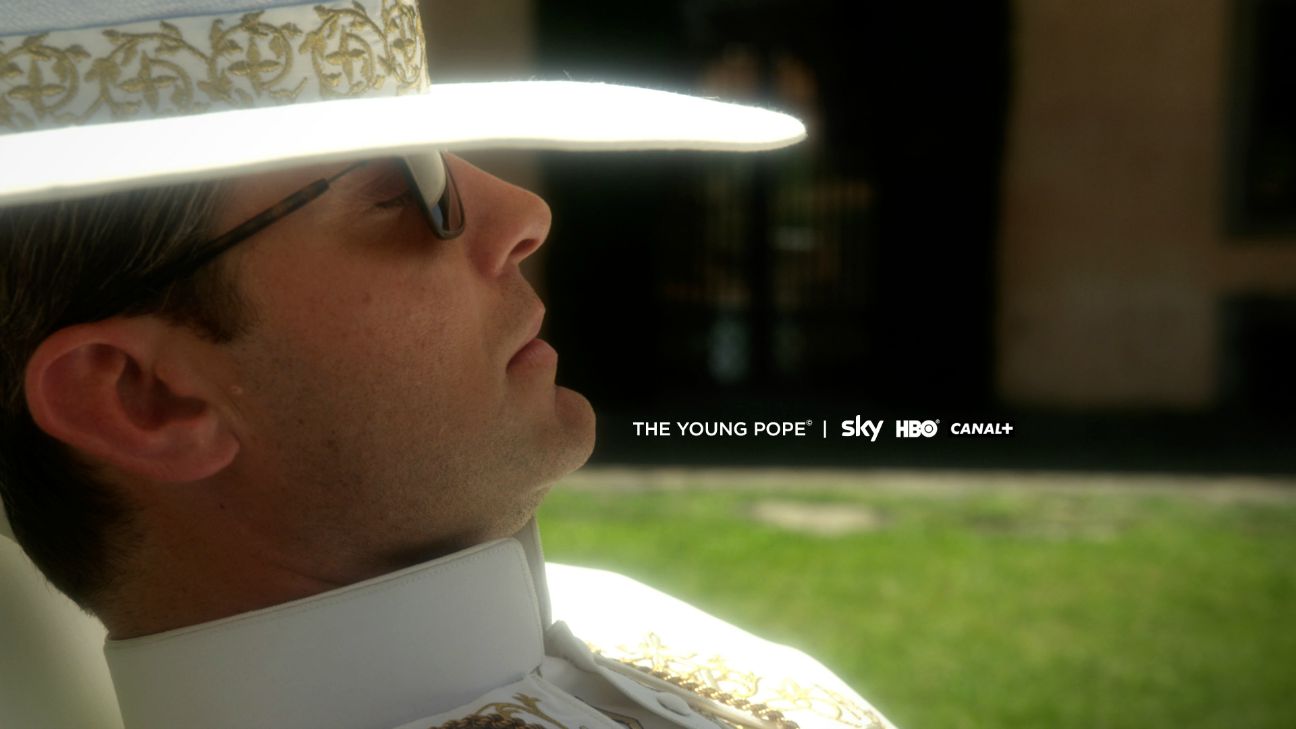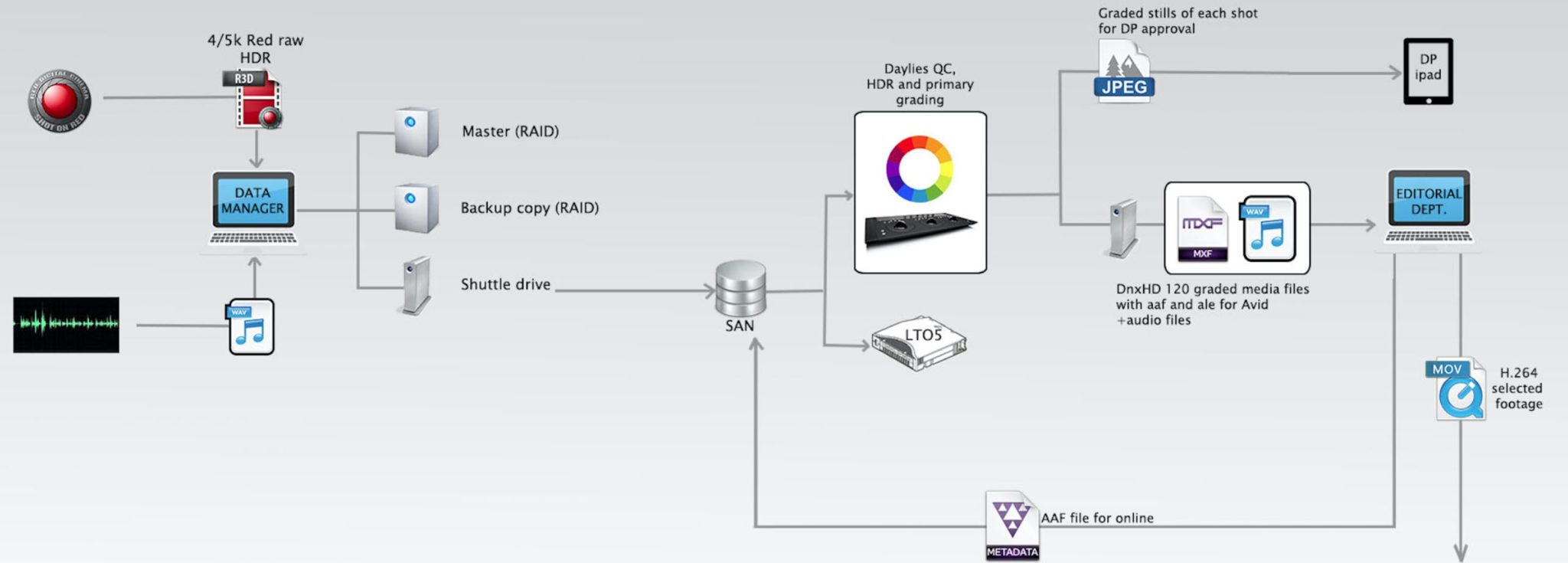Post-Production Supervisor Franco Casellato and WCPMedia on Enabling Long-Distance Collaboration
Add widely lauded director Paolo Sorrentino (The Great Beauty, Youth), who has had six films in competition at the Cannes Film Festival, to the list of highbrow auteurs who have been lured to the small screen by its promise of sophisticated longform storytelling. Sorrentino’s 10-episode series, The Young Pope, debuted at the Venice Film Festival before premiering on Sky Atlantic in Italy and making its way stateside via HBO. The project was produced by Wildside, co-produced by Haut et Court and MediaPro, and co-financed by Sky, HBO, and Canal+.
Asked whether any compromises were made when a celebrated cineaste like Sorrentino moved from feature films to a television series workflow, post-production supervisor Franco Casellato told StudioDaily compromise wasn’t on the table. “For a director like Paolo, the needs and expectations remain the same when working on a feature film or on a series,” Casellato said. “Creativity and style don’t change. On the other hand, post-production is discreetly more involved with the workflow setup, with the dailies management and sharing, with a long-term schedule and with simultaneous deliveries to several international broadcasters. All this has to be done without being in the way of the creative process but being in perfect sync with the project needs.”
Dragon Dailies
The Young Pope shot with Red Epic Dragon X cameras. All of the footage was captured at the HD-native 16×9 aspect ratio, but acquisition formats varied by shot — daytime shots were captured at 4K resolution, while night and VFX shots were captured at 5K. Filming (mostly at Rome’s famous Cinecittà, but also, briefly, in Venice, Los Angeles, and South Africa) took place over seven months in 2015 and 2016.
The Young Pope team used WCPMedia Services’ cloud-based collaboration platform, including a virtual screening room, to share media during production and post. Dailies were distributed via WCPMedia’s Screening Room web application, which employs automated transcode and delivery technology to optimize files for secure review. “They wanted to be 100 percent confident in the quality and the look of the material they were sending abroad,” said WCPMedia Sales and Operations Manager Luca de Sensi in a prepared statement. “We accommodated their video specs and color science into our workflows to deliver a result that was color accurate and consistent across the board.” Production media was stored at a Swiss data center with Tier IV certification, and all access was strictly tracked and controlled, WCP said.
Production and Post Workflow
All told, the production generated more than 200 TB of R3D camera original and DNxHD 120 editorial footage over 24 weeks, at a mean rate of 1.7 TB per shooting day. Camera-original footage was saved and backed up to RAID on set, with a third copy loaded onto a SAN from which dailies processing would take place — and an LTO5 archival copy would be created. Graded stills were sent to the DP for approval, while graded DNxHD 120 media files with AAF and ALE for Avid went to editorial, which created H.264 versions of the selects.
For final color, the edit was conformed to the raw R3D files stored on the SAN in Autodesk Smoke. Grading and HDR balancing took place in Autodesk Lustre, with a final DPX render at 2K and 4K resolution before deliverables were created for broadcast.
Rome post facility Margutta Digital International (MDI) supplied 3840×2160 16-bit linear ungraded DPX files to Double Negative in London for VFX work, and DNeg returned the same to MDI.
Around the World
The entire series was kept online during production and post — and even after the show was finished, in order to ensure all of the content remained available worldwide for PR and marketing purposes, including delivering trailers to potential buyers. WCPMedia was also used to deliver video and audio elements to dubbing and re-recording facilities across Europe and in Burbank, Santa Monica, and New York City, Casellato said. The final mix of the show’s English-language and Italian versions was recorded in Rome, the French version was recorded in Paris, the Spanish in Barcelona, and the German in Munich.
The final source mastering format was 3840×2160 Ultra HD in Apple’s virtually lossless ProRes XQ 4444 codec. Casellato said a variety of delivery formats were required, including:
- 25p JPEG 2000 File
- DNxHD 175x File-Based Delivery 23.98 1920×1080 resolution
- Pro Res 422 HQ 23.98 1920×1080 resolution
- Apple Pro Res 422 1920X1080 25p
- Apple ProRes 422 HQ U-HD 3840×2160 QT format @25
- Apple Pro Res 4:4:4:4 XQ file 1080p Full-Frame 25psf
- XDCAM Mpeg 2 HD 4:2:2 in wrapper Mxf Op1A
- AVC Intra Class 100 as defined by SMPTE RP 2027:2011 in wrapper MXF OP1a
The Young Pope is scheduled for release on Blu-ray in the U.S. by Lorber Video on June 6.
Crafts: Broadcasting Post/Finishing
Sections: Technology
Did you enjoy this article? Sign up to receive the StudioDaily Fix eletter containing the latest stories, including news, videos, interviews, reviews and more.













Hmmmm?